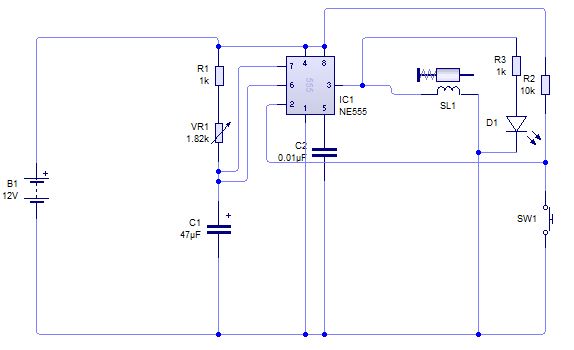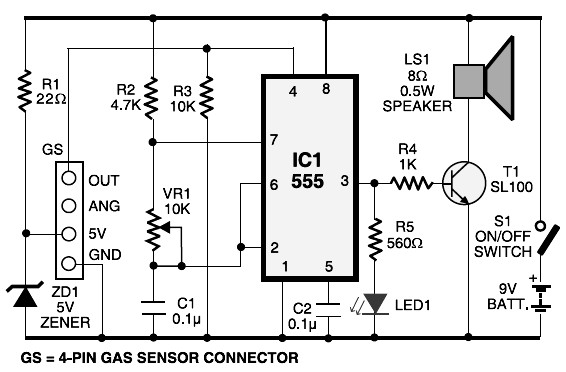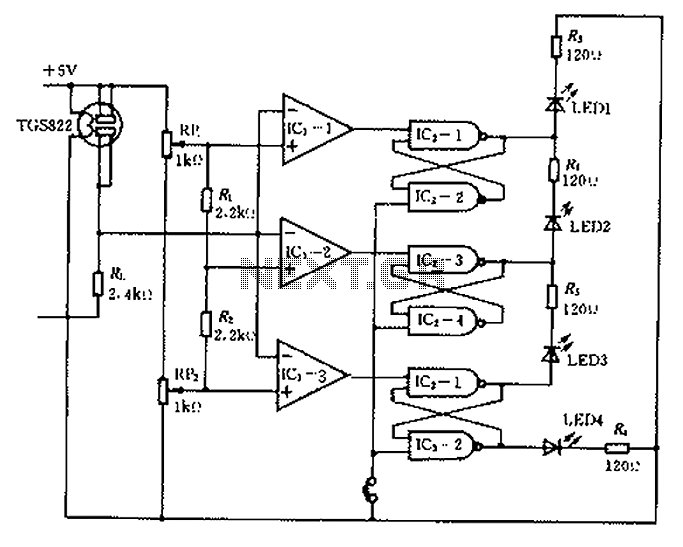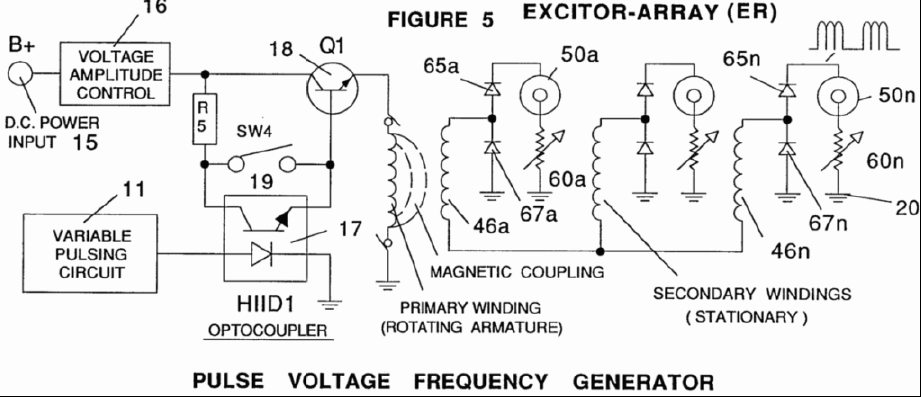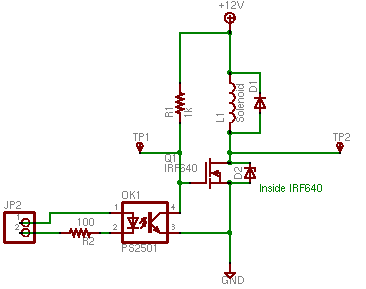
Logic-Level actuated gas solenoid
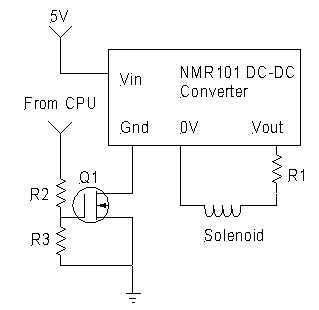
Despite exhaustive searching, every reasonably priced solenoid valve for controlling propane during pushbutton start required 12VDC, beyond the capabilities of a normal pump battery. There are methods to generate HV pulses which will actuate the solenoid, which will remain closed down to below 5V, but a more expensive and reliable route with a DC-DC converter, the Newport NMR101, was chosen. R2 is 10K, and R3 is 100K. R1 is 39 ohms. A diode clamp across the solenoid might not be a bad idea. Vary R1 to achieve reliable closing of the valve and to keep current to ~90 mA through the solenoid. The converter will draw 260 mA from the 5V source. The MOSFET (IRLD014) is a logic-level, 4 pin DIP package. A 5V logic high from the CPU will actuate the circuit, with less than 1mA at the gate.
The circuit design involves the integration of a solenoid valve, which is utilized for controlling propane during a pushbutton start mechanism. The requirement for a 12VDC solenoid valve poses a challenge, as typical pump batteries do not provide this voltage level. To resolve this, a DC-DC converter, specifically the Newport NMR101, is employed to step up the voltage from a 5V source to the required level for the solenoid operation.
In the schematic, R1, R2, and R3 are resistors that play crucial roles in the circuit's performance. R1, with a value of 39 ohms, is critical for controlling the current flowing through the solenoid, ensuring it remains around 90 mA for reliable operation. Adjusting R1 allows for fine-tuning of the valve's closing mechanism. R2 (10K) and R3 (100K) are likely part of a voltage divider or feedback network that ensures stable operation of the MOSFET and the overall circuit.
The IRLD014 MOSFET serves as the primary switching device, allowing for efficient control of the solenoid valve. It is a logic-level MOSFET, which means it can be fully turned on with a 5V logic high signal from a microcontroller or CPU. This feature is particularly beneficial as it minimizes the gate current to less than 1mA, conserving power and extending the life of the controlling device.
Additionally, the inclusion of a diode clamp across the solenoid is recommended to protect the circuit from voltage spikes that can occur when the solenoid is deactivated. This protective measure is essential to ensure the longevity and reliability of the components within the circuit.
Overall, this circuit design effectively addresses the challenges of controlling a solenoid valve for propane with a low-voltage supply, while ensuring reliable operation through careful component selection and configuration.Despite exhaustive searching, every reasonably priced solenoid valve for controlling propane during pushbutton start required 12VDC, beyond the capabilities of a normal pump battery. I know that there are methods to generate HV pulses which will actuate the solenoid, which will remain closed down to below 5V, but I went the more expensive and reliable route with a DC-DC converter, shown here, the Newport NMR101.
R2 is 10K, and R3 is 100K. R1 is 39 ohms.
The circuit design involves the integration of a solenoid valve, which is utilized for controlling propane during a pushbutton start mechanism. The requirement for a 12VDC solenoid valve poses a challenge, as typical pump batteries do not provide this voltage level. To resolve this, a DC-DC converter, specifically the Newport NMR101, is employed to step up the voltage from a 5V source to the required level for the solenoid operation.
In the schematic, R1, R2, and R3 are resistors that play crucial roles in the circuit's performance. R1, with a value of 39 ohms, is critical for controlling the current flowing through the solenoid, ensuring it remains around 90 mA for reliable operation. Adjusting R1 allows for fine-tuning of the valve's closing mechanism. R2 (10K) and R3 (100K) are likely part of a voltage divider or feedback network that ensures stable operation of the MOSFET and the overall circuit.
The IRLD014 MOSFET serves as the primary switching device, allowing for efficient control of the solenoid valve. It is a logic-level MOSFET, which means it can be fully turned on with a 5V logic high signal from a microcontroller or CPU. This feature is particularly beneficial as it minimizes the gate current to less than 1mA, conserving power and extending the life of the controlling device.
Additionally, the inclusion of a diode clamp across the solenoid is recommended to protect the circuit from voltage spikes that can occur when the solenoid is deactivated. This protective measure is essential to ensure the longevity and reliability of the components within the circuit.
Overall, this circuit design effectively addresses the challenges of controlling a solenoid valve for propane with a low-voltage supply, while ensuring reliable operation through careful component selection and configuration.Despite exhaustive searching, every reasonably priced solenoid valve for controlling propane during pushbutton start required 12VDC, beyond the capabilities of a normal pump battery. I know that there are methods to generate HV pulses which will actuate the solenoid, which will remain closed down to below 5V, but I went the more expensive and reliable route with a DC-DC converter, shown here, the Newport NMR101.
R2 is 10K, and R3 is 100K. R1 is 39 ohms.
A diode clamp across the solenoid (not shown) might not be a bad idea. Vary R1 to acheive reliable closing of the valve and to keep current to ~90 mA through the solenoid. The converter will draw 260 mA from the 5V source. The MOSFET (IRLD014) is a logic-level, 4 pin DIP package. A 5V logic high from the CPU will actuate the circuit, with less than 1mA at the gate.
🔗 External referenceWarning: include(partials/cookie-banner.php): Failed to open stream: Permission denied in /var/www/html/nextgr/view-circuit.php on line 713
Warning: include(): Failed opening 'partials/cookie-banner.php' for inclusion (include_path='.:/usr/share/php') in /var/www/html/nextgr/view-circuit.php on line 713

